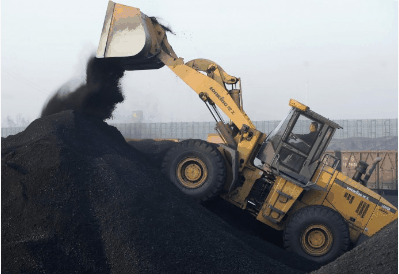
It’s an under statement to say that Australia’s fortunes are inextricably linked to the Chinese economy. China has become our largest export destination, with its export share having grown from around 5% in 2000 to 22% in 2009 (see below IMF chart):
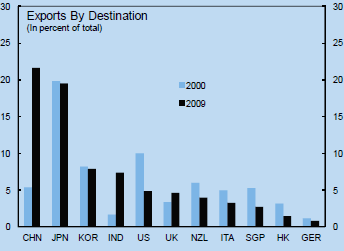
No other commodity exporter has benefited as much from the China boom than Australia, as shown by the below IMF chart. Australia’s terms of trade (ToT) has literally exploded since 2003 as China drove-up the price of iron ore and coal – Australia’s two major exports.
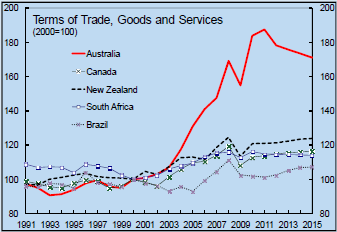
Now Australia’s ToT are sitting at 60-year highs, which has significantly raised national income, increased the Government’s tax take, and sent the Australian dollar to near parity with the USA. Readers seeking a detailed analysis of the impact of the ToT on Australia’s economy are advised to read Tom Conley’s excellent recent article on this issue.
Finally, the surge of the ToT has led to a significant increase in mining investment, as mining companies look to build supply capacity (see below RBNZ chart). This investment, in turn, has significantly boosted Australia’s GDP.
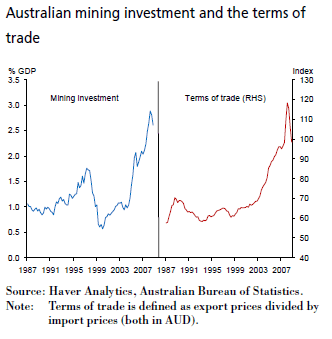
The question is, how long can the commodity boom last? Whilst the Reserve Bank and IMF (see second chart) are predicting that Australia’s ToT will remain at elevated levels for an extended period, notable investors like Jim Chanos, Vitaliy Katenelson, Gary Shilling, and Puru Saxeena have warned that the Chinese economy is a bubble about to burst, and are forecasting a sharp slowdown in Chinese growth and a collapse in commodities prices sometime in the near future.
Adding to the bear case is the below chart from Macleans.ca, which tracks the 10-year annual returns in overall commodities over the past 200 years (h/t Financial Insights). The chart shows that every time that commodities prices have risen as fast and as high as they have over the past decade, a sharp decline has followed.
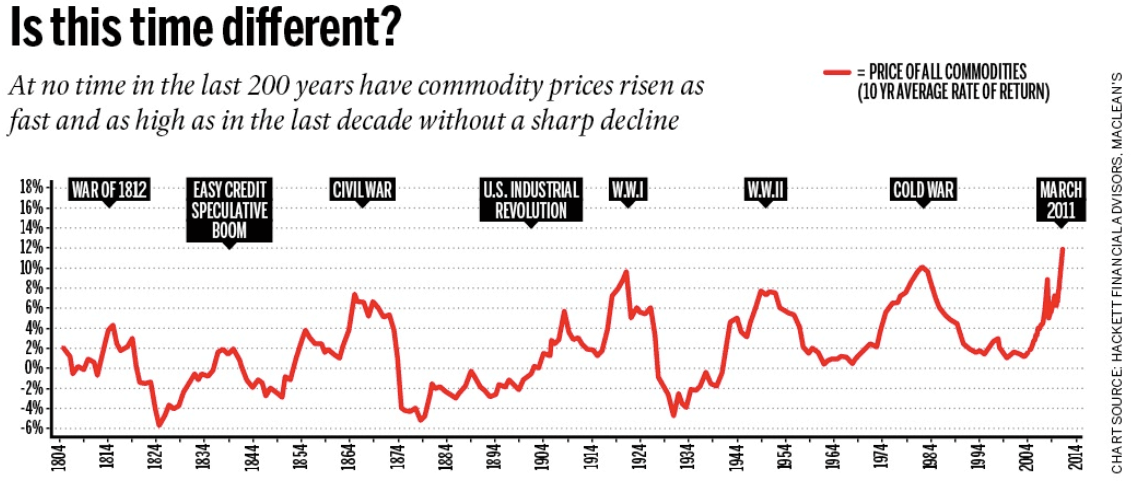
While it’s possible that this commodities cycle will continue to defy gravity for an extended period, the weight of 200 years of history is against it. If a contraction in China’s economy doesn’t send commodities prices crashing down, then a flood of new supply from competing commodities producers will force prices lower (albeit more gradually).
The worst case scenario for Australia is if plummeting demand from China is met with rising supply as the massive mining investment currently underway in Australia, Brazil and other commodities producing countries begins to bare fruit.
For what it’s worth, I am siding with the bears on this one. Commodity prices will not defy gravity and will most likely decline almost as fast as they rose. 200 years of history and basic economics is too much to ignore.
Cheers Leith

